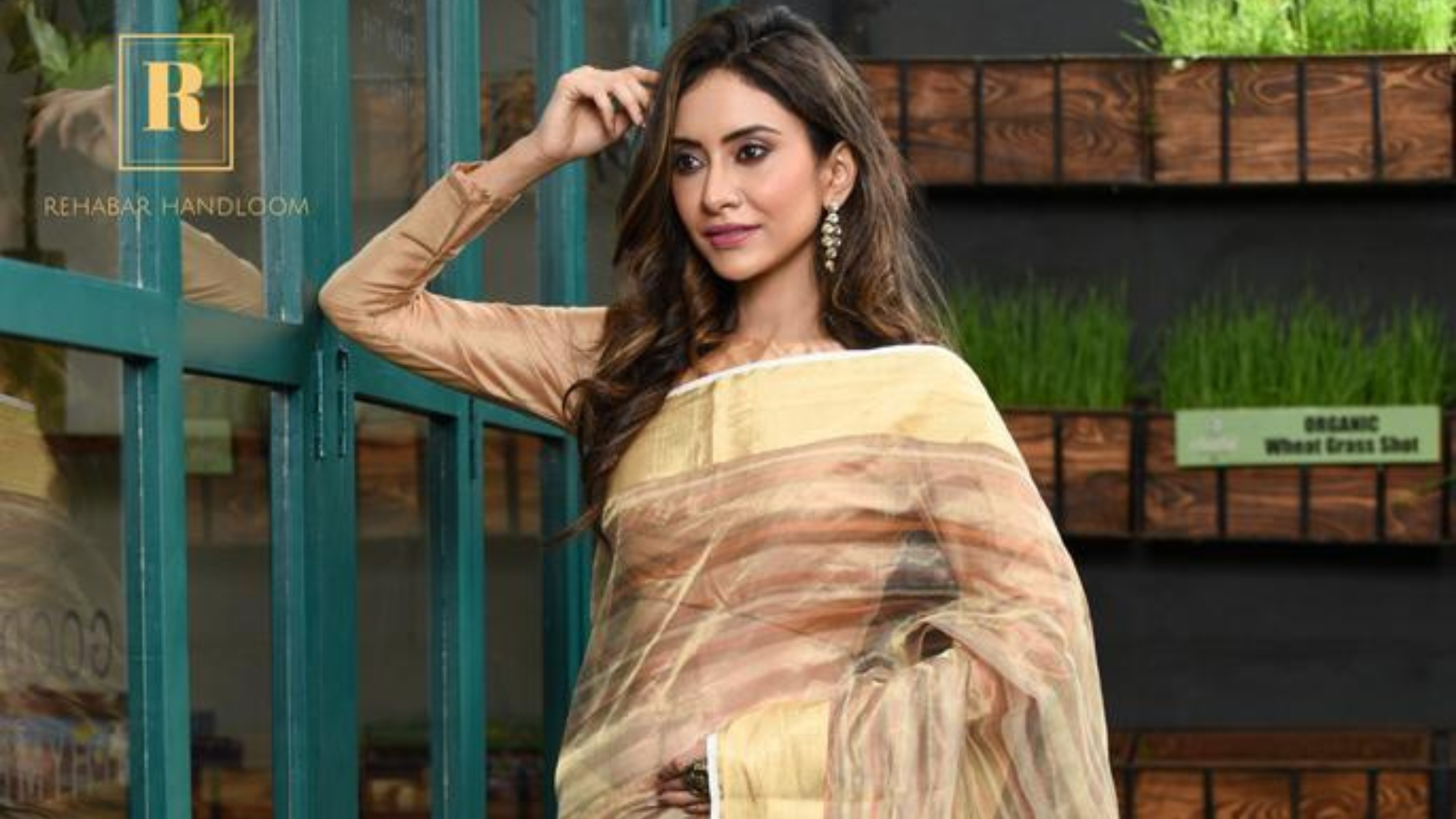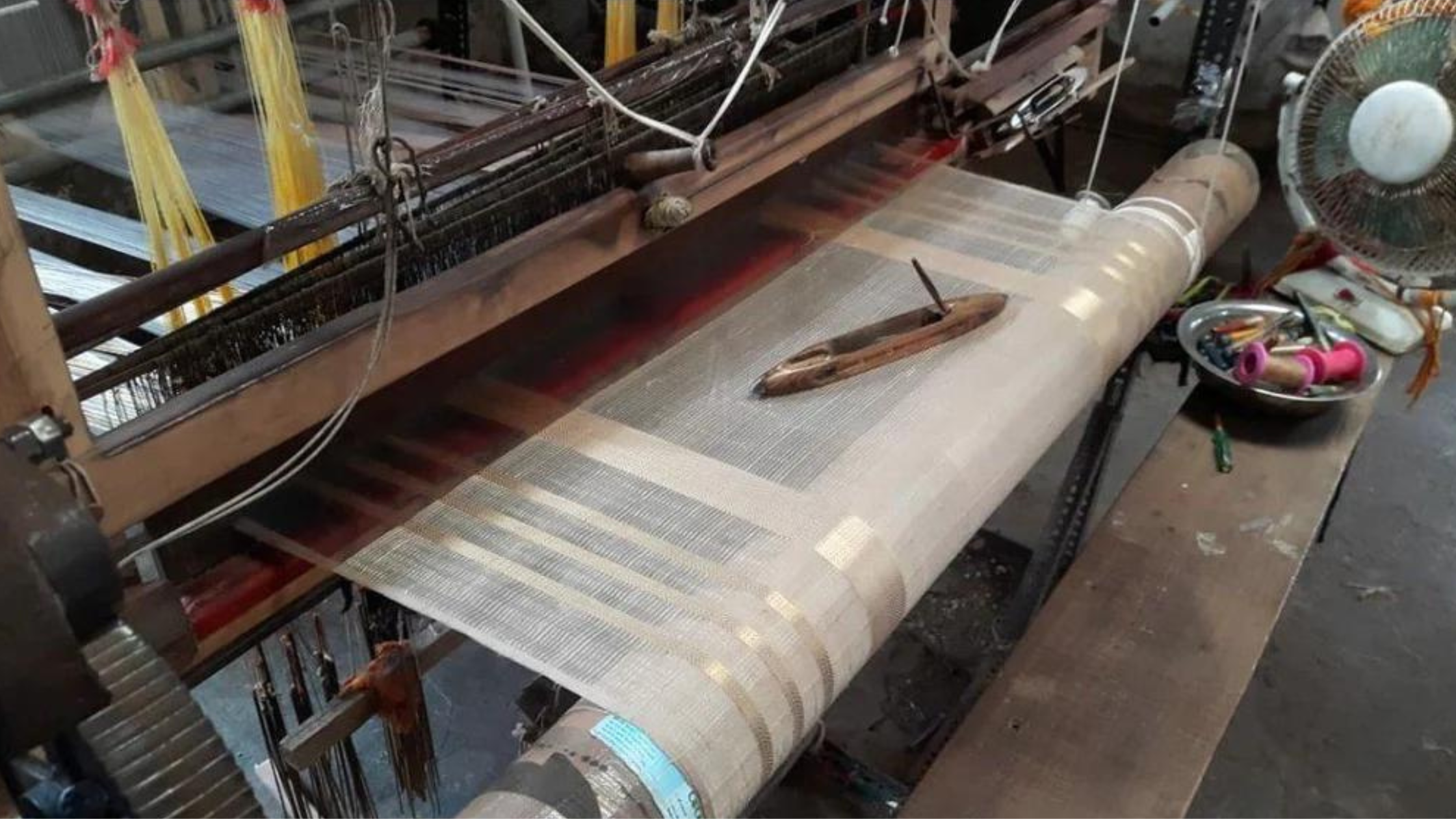Article: MAHESHWARI SAREES

MAHESHWARI SAREES
“Sarees are like Indian women – so versatile. From business meetings to first nights, from political speeches to red carpets, from college farewells to Indian kitchens, they truly have many avatars…”
Saree is the 9-yard language of three generations of a Grandmother, Mother and Granddaughter with different words but…same meaning.
It was early 90’s as I vividly remember it. I used to be tiny cute nuisance jumping around in every corner of the house. And my all cognizant mother, when she would come to cease my galactic attack on her household items, I would run and hug her. I would hit my hands on her saree and an astounding paper crushing sound would emerge which amused me to infinity and beyond. At that time she used to wear paper silk saree because my father liked it. You see, enigmatic relationships are based upon enigmatic choices under enigmatic circumstances which in a chain reaction beget enigmatic actions drawing enigmatic conclusions more of like this enigmatic analogy and its equally enigmatic purpose.
Speaking of sarees, every Indian man would concur on this that saree brings out the best of Indian women and one of the best sarees coming from our rich Indian culture is Maheshwari Sarees, which is one of the best sellers in both national and international markets.
Maheshwari saree comes from Maheshwar, a city in Khargone district of Madhya Pradesh.
The history of origins of Maheshwari Saree goes back to the 5th century when the city on the banks of the river Narmada, Maheshwar, used to be capital of the Malwa during the Maratha Holkar reign till January 1818.
Royals have royal tastes and I wonder if anyone in the world could beat Indian royals in that. Rani Ahilya Bai Holkar wanted to design an exclusive nine-yard saree which she could gift to the special visitors of the palace. She assembled a special team of craftsmen from Surat and Malwa to design Maheshwari Saree. That is not all; the first saree was designed by Rani Ahilya Bai Holkar herself which made it a huge hit in the royal circle. Conclusive to this, Maheshwari Saree developed a cult and soon these sarees became a must have it for every woman.
Currently, Maheshwari sarees are weaved by looms with lightweight metal frames. The fabric used in the saree is dyed with naturally extracted colours and zari and kinari were used to enhance the richness of this weave. More than often, weavers also used gold or silver threads and gemstones to make the saree come alive.
What women often love about Maheshwari Saree is its glossy finish and lightweight. Most sarees are available in silk, cotton but Maheshwari saree is one of those few sarees which is available in wool. Another significant feature of Maheshwari Saree is the pallu. The pallu is done up in bright colours like magenta, pink, green, mauve, violet and maroon.
Colours bring out the essence of vision beneath. In its early life cycle, Maheshwari sarees were woven in earthy shades like maroon, red, green, purple and black but today you can find them in popular colours like shades of blue, mauve, pink, yellow and orange, mixed with gold or silver thread.
There are five popular forms of Maheshwari Sarees- Chandrakala, Baingani Chandrakala, Chandratara, Beli and Parbi. While the Chandrakala and Baingani Chandrakala are plain sarees, Chandratara, Beli and Parbi are characterised by stripes or checks.
But but but…
Before you march ahead to get yourself one of these beauties keep in mind a few points to check whether or not you are buying original stuff…
1. These sarees are characterised by a narrow coloured border embellished with zari, and small checks, narrow stripes, or solid colour in the body.
2. The speciality of Maheshwari sarees is its reversible border, also known as bugdi, which can be worn on both sides.
3. These sarees are embellished with leaves and flowers on the border, in karnphool pattern.
4. These sarees are known for their unique pallus which are made five stripes, three coloured and two white alternating, running along its width.
Also, the most important point being:
5. Go, and get yourself this magnificent piece of Indian heritage- Maheshwari Saree…


Leave a comment
This site is protected by hCaptcha and the hCaptcha Privacy Policy and Terms of Service apply.